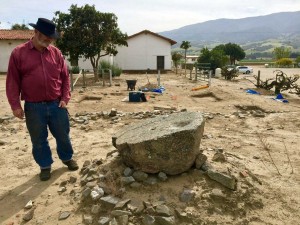HABS Survey
Rubén G. Mendoza, PhD
Field Exercise:
1. This exercise will entail a walking tour and architectural survey of historic buildings and architecture encountered within an early American community. Because much of the basic data needed for accurately identifying the periods, styles, and types of American buildings to be encountered in this survey has already been collected, your task will be to familiarize yourself with a subset of the architectural styles, periods, and cultures represented. Having completed that portion of the exercise, you will then be directed to familiarize yourself with some of the basic terminology used to identify architecture and its elementary forms. Armed with the appropriate terminology for identifying architectural styles, you will then be directed to use said terminology to identify those features or elements of the architecture of specific buildings that serve to distinguish it stylistically, culturally, and chronologically from other buildings in the same area of town.
In responding to the corresponding lab questions, you will need to have some sense of the basic historical periods for the California Central Coast, which are as follows:
· Spanish Mission & Presidio: AD 1770-1821
· Mexican Republican: AD 1822-1848
· Early Euro-American: AD 1849-1870
· Victorian Revivalist: AD 1870-1890
· Vernacular American: AD 1890-1940
· Modern American: AD 1940-Present
For the purposes of this architectural survey, you should take into account the taxonomy of architectural types, styles, and periods represented by the buildings of the Historic American Buildings Survey and the reports of the Cultural Resources Board of the City of San Juan Bautista (1981). See chart on page 2.
2. After you have completed a preliminary walking tour of the historic district with your instructor and have had the opportunity to review some of the building types that therein, please use the chart on page two to familiarize yourself with those architectural features noted in the table. Be prepared to identify such features as mr = Mission Revival, or bb = Board and Batten types in the architecture examined. Once you have had an opportunity to review the types noted, please notify your instructor so that the next phase of the survey can begin.
3. In completing the actual Historic American Buildings Survey form represented with the chart on page two, you should select a range of buildings that provide a cross section of between five and ten different building types that would appear to represent the diverse types and styles of architecture noted in the table. With the assistance of your instructor, you will be provided the names of the buildings and the respective dates of their construction. Add the Building ID information to the appropriate box in the table. Finally, using all available information, as well as your observations, you will then begin to annotate the categories within the table that correspond to the elements or features within the architecture of individual buildings that you believe best represent the styles noted in said table.
Lab Questions:
1. What do the construction materials, overall design, form, or architectural style of any one particular building suggest about that buildings use or function? What does it suggest about the cultural influences that went into the style or design? 2. Do the architectural categories or styles provided in the attached table provide a reliable or otherwise accurate body of descriptors for the styles studied this day?
2. What do the architectural styles, periods of construction, and material types used in the manufacture of the many buildings surveyed this day suggest about the culture, society, technology, and civic planning of the community in question?
3. Because so many of this community’s historic buildings have undergone recurrent renovations, remodeling, and variable efforts at historic preservation, do you believe that such modern modifications have enhanced or detracted from each building’s historic significance?
4. Based on your experience with historic architecture this day, what do you believe that old buildings have to offer in the way of community memory and the broader picture of American culture and society?


